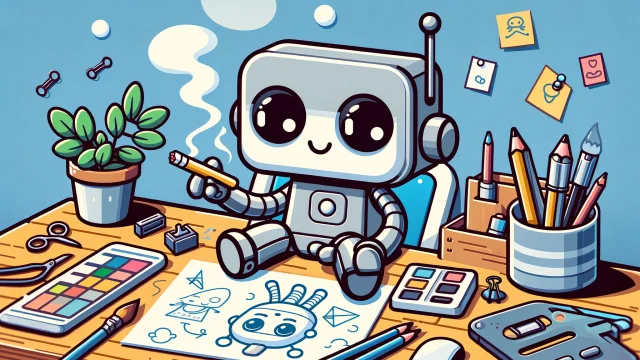Dragon Ball AF: The Mythical Fan-Made Series That Captured the Fandom
Dragon Ball AF is one of the most well-known fan concepts in the Dragon Ball community. Despite never being an official continuation of the franchise, Dragon Ball AF has gained legendary status, inspiring fan art, stories, and even unofficial manga adaptations. Its mysterious origins and the creativity it sparked in the fandom make it a fascinating piece of Dragon Ball history.
This article explores the origins, myths, and impact of Dragon Ball AF while highlighting its influence on the fandom and fan-created content.
1. What is Dragon Ball AF?
1.1. Definition
- Dragon Ball AF (commonly interpreted as “After Future” or “Alternate Future”) is a rumored sequel to Dragon Ball GT that never officially existed.
- It became infamous for its speculative storylines, character designs, and fan-made content.
1.2. Origin of the Rumor
- The Dragon Ball AF myth began in the early 2000s, originating from a piece of fan art showing Goku in a new Super Saiyan 5 form.
- The image, created by artist David Montiel Franco (known as “Tablos”), was mistaken for official art, leading to widespread speculation.
2. The Key Features of Dragon Ball AF
2.1. New Transformations
- Dragon Ball AF is often associated with outlandish transformations that exceed canonical forms:
- Super Saiyan 5: The most iconic AF form, depicted as having long, white or silver hair and immense power.
- Super Saiyan 6 and Beyond: Fan-created extensions that push the limits of imagination.
2.2. New Characters
- Fan-made characters introduced in AF include:
- Xicor: A villain said to be the son of Goku and a Kai.
- Evil Vegeta: A version of Vegeta corrupted by dark energy.
- Zai: Another fan-created antagonist with god-like powers.
2.3. Storylines
- Most AF stories revolve around the return of Goku from the dragon realm after the events of Dragon Ball GT.
- These fan interpretations often explore the multiverse, divine beings, and power levels that far surpass anything seen in canon.
3. Why Dragon Ball AF Became So Popular
3.1. The Power of Mystery
- The lack of new Dragon Ball content after Dragon Ball GT left a void that fans filled with speculation and creativity.
- The ambiguous origins of AF gave it an almost mythical status in the fandom.
3.2. Fan Creativity
- Fans around the world embraced AF, producing art, manga, and animations that kept the idea alive for years.
- Popular fan-made manga, such as Toyble’s Dragon Ball AF (later known as Toyotarou, now the official artist for Dragon Ball Super), brought structure to the AF mythos.
3.3. The Need for More Content
- Fans were eager for new Dragon Ball material, and AF offered an unofficial glimpse into what could happen next.
4. Impact of Dragon Ball AF on the Fandom
4.1. Birth of Fan Manga
- Dragon Ball AF paved the way for a new genre of Dragon Ball fan manga, with creators reimagining and expanding the franchise.
- Artists like Toyble and Young Jijii became well-known for their contributions to the AF mythos.
4.2. Influence on Canon
- While AF itself remains non-canonical, its emphasis on new transformations and multiverse concepts can be seen in official Dragon Ball Super content, such as:
- Super Saiyan God and Ultra Instinct transformations.
- The exploration of alternate universes in the Tournament of Power.
4.3. Enduring Legacy
- The idea of Dragon Ball AF continues to inspire fan creations, ensuring its place in the history of the fandom.
5. Is Dragon Ball AF Official?
5.1. Debunking the Myth
- Dragon Ball AF was never officially created or endorsed by Akira Toriyama or Toei Animation.
- Toriyama has addressed AF rumors, confirming they are purely fan creations.
5.2. Fan Acceptance
- Despite its unofficial status, many fans treat AF as a beloved alternate universe of Dragon Ball.
6. Comparisons to Dragon Ball Super
6.1. Themes of Expansion
- Like AF, Dragon Ball Super introduces god-like powers, new transformations, and multiverse exploration.
- Some fans argue that Super fulfilled the potential AF hinted at, while others feel AF retains its charm as a fan-driven concept.
Conclusion: The Legacy of Dragon Ball AF
Dragon Ball AF represents the boundless creativity of the Dragon Ball fandom. What began as a misunderstanding evolved into a cultural phenomenon, inspiring years of fan art, stories, and discussions. While it remains unofficial, its influence on the fandom and its role in keeping Dragon Ball alive during quieter periods cannot be overstated.
The legacy of Dragon Ball AF is a testament to the passion and imagination of fans, proving that the spirit of Dragon Ball thrives not only in official content but also in the dreams of its dedicated community.

